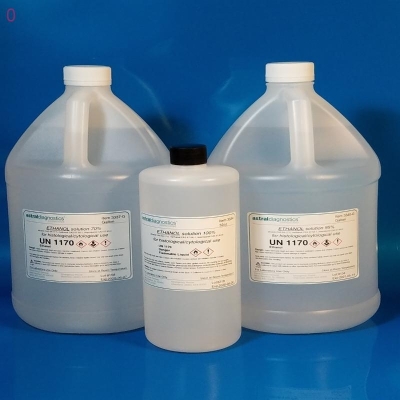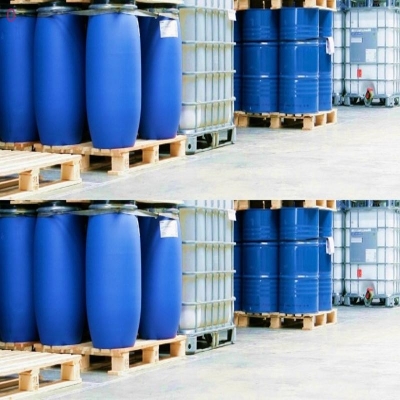-
Categories
-
Pharmaceutical Intermediates
-
Active Pharmaceutical Ingredients
-
Food Additives
- Industrial Coatings
- Agrochemicals
- Dyes and Pigments
- Surfactant
- Flavors and Fragrances
- Chemical Reagents
- Catalyst and Auxiliary
- Natural Products
- Inorganic Chemistry
-
Organic Chemistry
-
Biochemical Engineering
- Analytical Chemistry
- Cosmetic Ingredient
-
Pharmaceutical Intermediates
Promotion
ECHEMI Mall
Wholesale
Weekly Price
Exhibition
News
-
Trade Service
[ Market analysis of chemical machinery equipment network ] Natural gas liquefaction is an important link in the upstream of the LNG industry chain, which is mainly carried out in natural gas liquefaction plants.
In the natural gas trade, LNG plants are a necessary link in the export trade of liquefied natural gas (LNG) and are directly affected by the prosperity of the LNG trade.
With the continuous growth of LNG trade volume, natural gas liquefaction production capacity has also continued to expand.
At the end of 2019, the number of natural gas liquefaction projects has reached 74, the number of production lines has reached 132, and the production capacity has reached 430 million tons/year, of which the increase in 2019 55% of the production capacity comes from the United States.
In addition, the average utilization rate of natural gas liquefaction capacity remains above 80%.
Chemical machinery and equipment network market analysis chemical machinery and equipmentIn the natural gas trade, LNG plants are a necessary link in the export trade of liquefied natural gas (LNG) and are directly affected by the prosperity of the LNG trade.
With the continuous growth of LNG trade volume, natural gas liquefaction production capacity has also continued to expand.
At the end of 2019, the number of natural gas liquefaction projects has reached 74, the number of production lines has reached 132, and the production capacity has reached 430 million tons/year, of which the increase in 2019 55% of the production capacity comes from the United States.
In addition, the average utilization rate of natural gas liquefaction capacity remains above 80%.
1.
The proportion of LNG trade continues to increase
1.The proportion of LNG trade continues to increase
The proportion of LNG trade continues to increase
Natural gas liquefaction is an important link in the upstream of the LNG industry chain, and its main function is to liquefy raw gas into LNG products.
Natural gas liquefaction is mainly carried out in natural gas liquefaction plants.
After natural gas is dehydrated, dehydrocarbonized, and acid gas is removed, the raw gas meets the technical requirements of liquefaction treatment.
The natural gas liquefaction plants adopt refrigeration processes or external cold sources to make natural gas -162 ℃ cryogenic liquid.
Natural gas liquefaction is mainly carried out in natural gas liquefaction plants.
After natural gas is dehydrated, dehydrocarbonized, and acid gas is removed, the raw gas meets the technical requirements of liquefaction treatment.
The natural gas liquefaction plants adopt refrigeration processes or external cold sources to make natural gas -162 ℃ cryogenic liquid.
In the natural gas trade, natural gas liquefaction is a necessary part of the liquefied natural gas (LNG) export trade, which is directly affected by the prosperity of the LNG trade.
According to statistics from BP Petroleum Corporation, from 2012 to 2019, the overall LNG trade volume increased, and its proportion in the natural gas trade volume also continued to increase.
In 2019, LNG trade volume reached 485.
07 billion cubic meters, accounting for 38%.
At the same time, the trade volume of pipeline natural gas decreased overall.
On the whole, the natural gas trade market is still dominated by pipeline natural gas, but the proportion of LNG trade continues to increase and its importance is becoming increasingly prominent.
According to statistics from BP Petroleum Corporation, from 2012 to 2019, the overall LNG trade volume increased, and its proportion in the natural gas trade volume also continued to increase.
In 2019, LNG trade volume reached 485.
07 billion cubic meters, accounting for 38%.
At the same time, the trade volume of pipeline natural gas decreased overall.
On the whole, the natural gas trade market is still dominated by pipeline natural gas, but the proportion of LNG trade continues to increase and its importance is becoming increasingly prominent.
In terms of the LNG export market, in 2019, the two countries with LNG export volume* were Qatar and Australia, with an export volume of more than 100 billion cubic meters; followed by the United States, Russia and Malaysia, with exports of 475, 373.
7 and 35.
14 billion respectively.
cubic meter.
7 and 35.
14 billion respectively.
cubic meter.
2.
In 2019, the natural gas liquefaction capacity has reached 430 million tons
2. In 2019, the natural gas liquefaction capacity has reached 430 million tons
In 2019, the natural gas liquefaction capacity has reached 430 million tons
With the continuous growth of LNG trade volume, the number of natural gas liquefaction projects and production lines also continues to grow.
At the end of 2019, there were 74 natural gas liquefaction projects, and the number of production lines reached 132, both of which increased from 2018.
At the end of 2019, there were 74 natural gas liquefaction projects, and the number of production lines reached 132, both of which increased from 2018.
In terms of natural gas liquefaction capacity, data show that from 2010 to 2019, the annual natural gas liquefaction capacity has continued to expand.
By the end of 2019, the liquefaction capacity has reached 430 million tons per year, and the scale of new capacity in 2019 is also the largest since 2010.
scale.
By the end of 2019, the liquefaction capacity has reached 430 million tons per year, and the scale of new capacity in 2019 is also the largest since 2010.
scale.
From the perspective of regional distribution, at present, the natural gas liquefaction capacity is mainly distributed in the Pacific Basin, and the liquefaction capacity accounts for 40%.
The main countries include Australia, Indonesia, Malaysia, etc.
; followed by the Atlantic Basin, which accounts for 37% of the liquefaction capacity.
Countries include the United States, Russia, and Algeria.
The main countries include Australia, Indonesia, Malaysia, etc.
; followed by the Atlantic Basin, which accounts for 37% of the liquefaction capacity.
Countries include the United States, Russia, and Algeria.
As of the end of 2019, Australia has surpassed Qatar to become a country with high liquefaction capacity.
Its increased capacity is mainly contributed by the local Ichthys LNG T1-T2 project and the Prelude project; the liquefaction capacity of Qatar and the United States reached 77.
1 and 46.
6 million tons/year, respectively It can be seen that the ranking of liquefaction capacity is basically consistent with the regional ranking of LNG export volume.
Its increased capacity is mainly contributed by the local Ichthys LNG T1-T2 project and the Prelude project; the liquefaction capacity of Qatar and the United States reached 77.
1 and 46.
6 million tons/year, respectively It can be seen that the ranking of liquefaction capacity is basically consistent with the regional ranking of LNG export volume.
3.
55% of the newly added liquefaction capacity in 2019 came from the United States
3. 55% of the newly added liquefaction capacity in 2019 came from the United States
55% of the newly added liquefaction capacity in 2019 came from the United States
It is worth noting that in 2019, the United States is a big liquefaction capacity expander.
In 2019, new natural gas liquefaction capacity totaled 42.
5 million tons/year, of which 55% of the new capacity was contributed by U.
S.
liquefaction plants, totaling 23.
35 million tons/year.
These new capacity came from Corpus Christi LNG and Came.
Lun LNG, Freeport LNG and so on.
In 2019, new natural gas liquefaction capacity totaled 42.
5 million tons/year, of which 55% of the new capacity was contributed by U.
S.
liquefaction plants, totaling 23.
35 million tons/year.
These new capacity came from Corpus Christi LNG and Came.
Lun LNG, Freeport LNG and so on.
4.
The average capacity utilization rate of natural gas liquefaction exceeds 80%
4. The average capacity utilization rate of natural gas liquefaction exceeds 80%
The average capacity utilization rate of natural gas liquefaction exceeds 80%
Compared with the pace of natural gas liquefaction capacity expansion, the volatility of the liquefaction capacity utilization rate is relatively small.
In 2019, the utilization rate of natural gas liquefaction capacity remained above 80%, a decrease compared to 2018.
In 2019, the utilization rate of natural gas liquefaction capacity remained above 80%, a decrease compared to 2018.
In 2019, there are 4 countries/regions with a capacity utilization rate of more than 100% for natural gas liquefaction: Norway, Russia, Papua New Guinea and Qatar.
Among them, Norway has a high capacity utilization rate of around 116%.
Among them, Norway has a high capacity utilization rate of around 116%.
For more industry-related data, please refer to the "China LNG Industry Market Outlook and Investment Strategic Planning Analysis Report" by the Qianzhan Industry Research Institute.
At the same time, the Qianzhan Industry Research Institute also provides industrial big data, industrial planning, industrial declaration, industrial park planning, industrial investment promotion, etc.
solution.
At the same time, the Qianzhan Industry Research Institute also provides industrial big data, industrial planning, industrial declaration, industrial park planning, industrial investment promotion, etc.
solution.
Original title: Ten pictures to understand the market status and competitive landscape of the natural gas liquefaction industry in 2020, the average capacity utilization rate exceeds 80%







